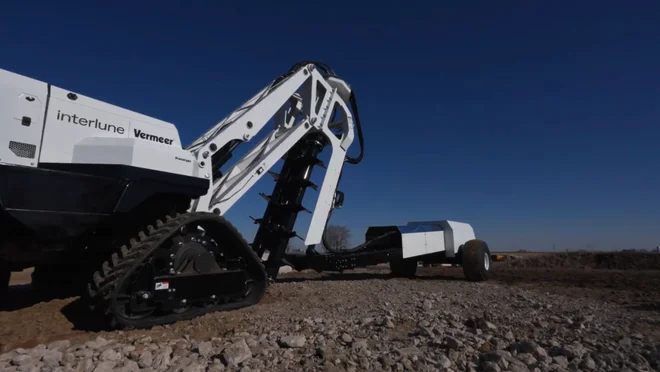
Race to the Moon 2.0: Interlune Unveils Lunar Excavator for Helium-3 Mining, Aims to Power Future Tech
The new space race isn't about flags and footprints; it's about resources. Interlune, a Seattle-based startup, has unveiled a groundbreaking prototype: the world's first extraterrestrial excavator designed to mine helium-3 on the Moon. Why is this important? Because helium-3, scarce on Earth but abundant in lunar regolith, holds the potential to fuel future technologies, from quantum computing to clean fusion energy. This initiative could mark a pivotal shift from mere space exploration to the practical utilization of lunar resources.

Interlune's Ambitious Mission: Founded in 2020, Interlune emerged from stealth mode in May 2025 with a bold plan: to harvest helium-3 for both space and terrestrial applications. Partnering with Iowa-based industrial giant Vermeer Corporation, they've developed a full-scale prototype of a lunar excavator capable of ingesting a staggering 100 metric tons of Moon regolith per hour.
The Helium-3 Gold Rush: Helium-3 is a highly sought-after isotope with a multitude of uses. It can be used in weapons detection systems, to cool down **quantum computers**, in **medical imaging** and, last but not least, **clean fusion energy**. While scarce on Earth due to our magnetosphere's protective shield, the Moon is rich in this resource, having been bombarded by solar wind for eons. According to Gary Lai, Interlune co-founder and CTO, the high-rate excavation needed to harvest helium-3 from the Moon in large quantities has never been attempted before, let alone with high efficiency.

The Excavator's Design: Details remain limited, but the prototype is designed to be lightweight for single-mission transport and energy-efficient, requiring significantly less power than comparable technologies. It boasts patent-pending innovations for efficient space mining. This innovative design differentiates it from previous trench-digging methods.
Customers Already Lined Up: Proving this isn't just another pie-in-the-sky idea, Interlune has secured commitments from major customers. The U.S. Department of Energy (DoE) has already purchased three liters of helium-3, slated for delivery before April 2029. Even more significantly, Maybell Quantum requires thousands of liters between 2029 and 2035 to maintain the ultra-low temperatures needed for their quantum devices.
Challenges Ahead: Interlune faces significant hurdles, primarily getting to the Moon. The company is finalizing launch plans and aims to establish a pilot plant on the lunar surface to excavate, sort, extract, and separate helium-3 before transporting it back to Earth.
Beyond Helium-3: If successful, Interlune envisions scaling up its operations to mine other valuable lunar resources, including industrial metals, rare Earth elements, and water.
Interlune's bold venture represents a significant leap towards a future where space resources are not just studied, but actively utilized. Will Interlune succeed in this ambitious endeavor? What other resources could the Moon offer? Share your thoughts in the comments below!